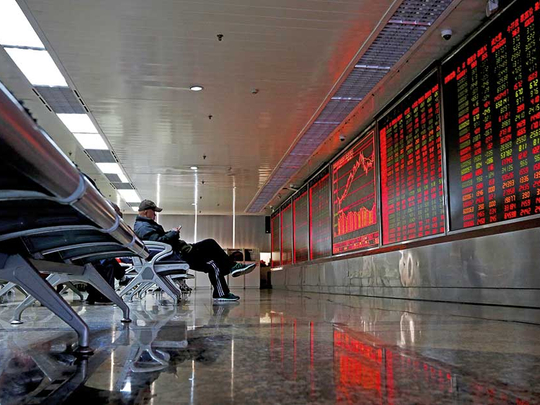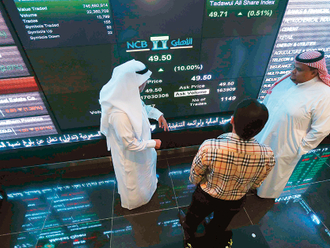
LONDON
Chinese equity funds trounced their emerging market peers in 2017, buoyed by MSCI’s decision to include mainland shares in some of its indexes, while Latin American names helped the top debt performers, data from Lipper showed.
And although managers say it will be hard to repeat the scale of last year’s success, most are optimistic, seeing only gradual US interest rate rises and continued support from fund inflows in 2018.
Chinese funds filled the top 12 places in a league table of emerging equity funds, according to performance data from Lipper, a Thomson Reuters company. They squeezed out Indian rivals which had kept them company in the first half of 2017.
On average, emerging equity funds returned 29.2 per cent, according to Lipper, more than double 2016’s 13 per cent. But that lagged MSCI’s benchmark emerging stocks index, which gained more than 34 per cent last year.
The steady climb attracted strong inflows, with emerging equity funds pulling in $83.8 billion, according to EPFR Global data, up from $435 million in 2016.
Chinese mainland stocks gained almost 22 per cent in 2017, as MSCI’s decision to include so-called A-shares in its equity indexes lit a fire under the market. Hong Kong-listed shares, many of which are already included in the MSCI China index, rose 36 per cent in 2017.
Greg Kuhnert, manager of the Investec GSF All China Equity fund, which topped the equity table with a return of over 70 per cent, said MSCI inclusion meant China was becoming increasingly important in asset allocation decisions.
“In this environment, we believe the recent market pullback offers attractive entry points,” he said, highlighting opportunities in financials like Ping An and consumer names such as dairy company Inner Mongolia Yili.
William Yuen, co-manager of the Invesco PRC Equity Fund, which came fourth with 61 per cent gains, was also bullish on the consumer and services sectors. But he expects the first half of 2018 to be “a little more challenging” due to slower industrial activity and regulatory uncertainties.
Russian equity funds, which had topped the table in 2016, brought up the rear in 2017 after the United States opted not to lift economic sanctions as expected. Russian equities ended the year down more than 5 per cent.
Attractive spreads
Emerging debt funds also benefited from strong inflows in 2017, attracting a record $80.3 billion according to EPFR Global, well above $37.6 billion the year before.
The top-performing sector fund according to Lipper was Vontobel Asset Management’s hard currency Emerging Markets Debt fund with 16.3 per cent returns, versus the average 9 per cent gain at emerging debt funds tracked by Lipper.
“We cannot repeat this every year but in general we are still positive on the market,” Wouter Van Overfelt, senior portfolio manager said, noting attractive average spreads of around 280 basis points over Treasuries.
He partly attributed his fund’s success to local currency holdings in Mexico, Argentina and Indonesia, which outperformed their dollar equivalents. The Mexico overweight also helped, as fears about harsh US policies in the wake of Donald Trump’s election to the presidency proved overdone.
Gradual Federal Reserve tightening and robust global growth should be positive for emerging markets, he predicted. But he also said: “Given that spreads have tightened quite a bit, we have increased the quality in our portfolio, by reducing our exposure to Africa, for example.” Ashmore’s Emerging Markets Local Currency Bond fund came second with 15.8 per cent returns, also thanks to big holdings in Mexico, Brazil and South Africa.
Jan Dehn, head of research at Ashmore, said upcoming elections in Brazil and Mexico could provide opportunities this year, although Mexico is no longer an overweight.
“If (left-wing Mexican presidential candidate) Andres Manuel Lopez Obrador looks like he will win, the peso will take a huge hit, but if he gets into office he won’t be half as bad as the market will price in,” Dehn said.
Like Overfelt, Dehn took a phlegmatic view of Fed moves.
“The start of the Fed hiking signal has actually been the signal for the rally in local markets as they priced in far more hikes than we’re going to get any time soon,” he said.








